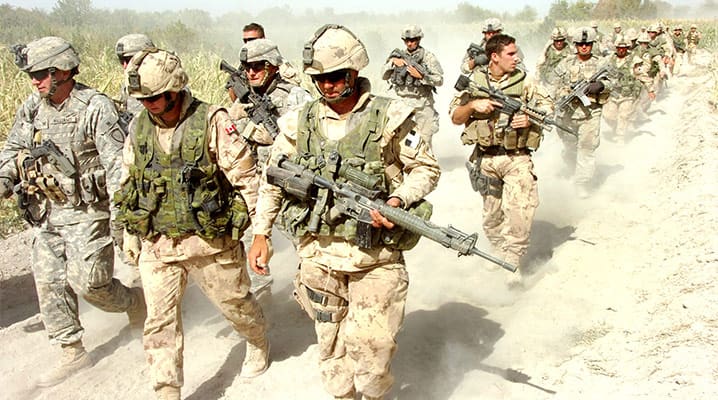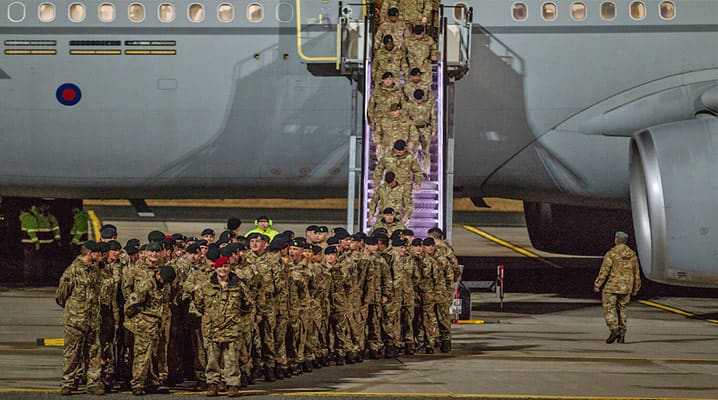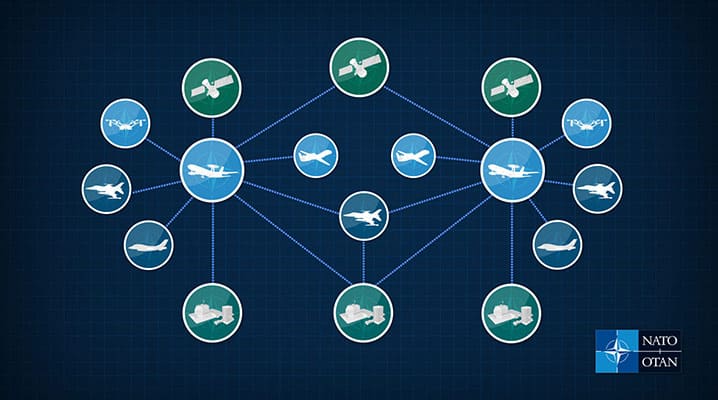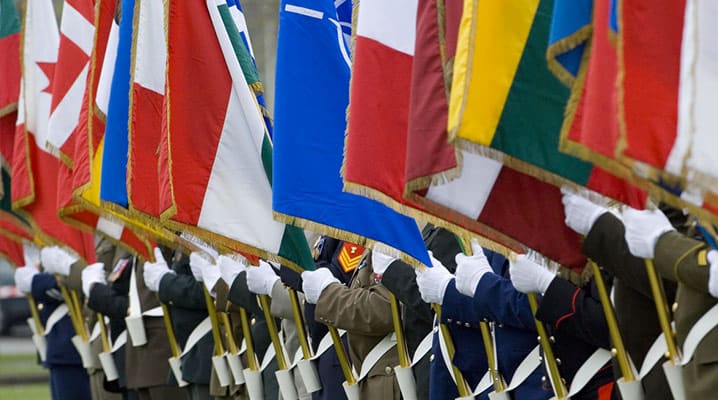As NATO prepares for a meeting of Allied heads of state and government in Brussels on 25 May, the debate on burden-sharing is heating up considerably. Both before and after entering office as 45th President of the United States, Donald J. Trump has harshly criticised various NATO Allies for not spending enough on defence. In fact, this reinforced longstanding US complaints about the tendency of many Allies to hitch a free ride on the back of the global US defence effort. Has the day of reckoning for European security now arrived? It is clear that many Allies must do more, however, the burden-sharing debate should be grounded in rigorous analysis. We must keep in mind the object of the burden that must be shared: a European continent that is whole, free and at peace. This requires not only sufficient financial resources, but also credible common defence plans.

Discussions on transatlantic burden-sharing are as old as the Alliance itself but the debate is heating up ahead of the meeting of Allied heads of state and government in Brussels on 25 May. © NATO
Discussions on transatlantic burden-sharing are as old as the Alliance itself. Ever since the end of the Second World War – and in marked contrast to the First – the United States has continued to underwrite European security through forward engagement and security guarantees based on extended deterrence. In return, its Allies have endorsed the leading role of the United States in the international system and contributed towards meeting common challenges. Throughout the Cold War, the US security umbrella allowed the process of European integration to bloom. Over the past two decades, following the end of the Cold War, NATO enlargement extended the boundaries of transatlantic security cooperation.
Yet it was in response to an attack on the United States – the terrorist attacks of 11 September 2001 – that the NATO’s collective defence clause (Article 5 of the Washington Treaty) was invoked for the very first time. In the wake of the 9/11 attacks, Allies sent AWACS surveillance planes to help patrol American skies and launched NATO’s largest military operation ever in Afghanistan, where hundreds of thousands of Allied soldiers served shoulder-to-shoulder with US troops. The NATO mission in Afghanistan forced the Alliance to adapt to new challenges such as counterinsurgency, yet the question on burden-sharing always lingered in the background: how much is enough?

Hundreds of thousands of Allied soldiers served shoulder-to-shoulder with US troops in Afghanistan as part of NATO’s largest military operation ever. Its mission was to help ensure that the country would never again be a safe haven for terrorists, following the 9/11 attacks on the United States.
It is more complicated than it seems
Measuring fair burden-sharing is more complicated than it seems. At present, Alliance planners use seven metrics to assess the performance of individual nations. These include two defence investment guidelines that often generate headlines, namely for each Ally to spend 2% of Gross Domestic Product (GDP) on defence and to spend 20% of national defence budgets on major equipment and related research and development. These guidelines were confirmed again at the 2014 NATO Summit in Wales, when Allied leaders firmly agreed to halt the decline in defence expenditure and aim to move towards the 2% (and 20%) guidelines within a decade, with a view to meeting their NATO Capability Targets and filling NATO's capability shortfalls. Yet planners must also consider capability metrics, namely the percentage of national armed forces that are deployable and sustainable, and the extent to which NATO capability planning targets are effectively implemented. Finally, a host of criteria measure actual contributions, be it in terms of land forces, aircraft and vessels deployed on NATO operations, or filling the manning requirements of the NATO Command Structure.
The way in which we think of burden-sharing may have to evolve in response to the changing security environment. Until quite recently, the Alliance was primarily focused on expeditionary crisis management, in which troop contributions were largely left to the discretion of individual allies. Yet ever since the pivotal moment in 2014 – when Russia occupied and illegally annexed Crimea and launched other aggressive actions against Ukraine – collective defence has made a comeback as the greatest responsibility of the Alliance. This means that burden-sharing is no longer primarily about expeditionary operations, but also about the ability of each nation to play its part in case of future war or an armed attack. In that sense, the NATO defence planning process that translates the Alliance level of ambition into national capability targets is the real game in town. It may lack the raw simplicity of the 2% guideline, yet it provides much more meaning to which capabilities are required and for what purpose, and it allows for a country-by-country review process. The pool of forces that NATO needs is tailored to meet the security concerns of all Allies, in such a way that self-help and mutual aid go hand in hand.

UK troops have deployed to Estonia as part of NATO’s enhanced forward presence in the region to demonstrate that an attack on one Ally would be considered an attack on the whole Alliance. NATO member states are reinforcing collective defence in response to Russia’s destabilising actions and policies since 2014. © GOV.UK
Re-investing in collective defence in the 21st century
If the Alliance is to be ready to defend itself, many if not most Allies face significant challenges in modernising their armed forces. Faced with many years of declining defence budgets, some Allies have been relying far too long on past investments and now need major initiatives to recapitalise their crumbling force structure. Others have maintained higher levels of investment but also a higher operational tempo, leading to worn-out or depleted arsenals. Significant differences notwithstanding, the conclusion is clear: most Allies – including the United States – face a bow wave of force modernisation bills simply to retain their current structure intact. Significantly, this also includes the modernisation of most platforms on which NATO’s nuclear posture rests, alongside many conventional weapon systems.
Measured against the evolving security context, future requirements may differ significantly from those of previous decades, especially with respect to high-end capabilities, such as long-range artillery, ground-based air defences and next generation strike systems. Without urgent reinvestment, European military dependency on the United States is set to aggravate significantly in the years to come: in some respects, it is already ‘baked in the cake’. As all nations grapple with the budgetary challenge to keep their armed forces fit for the future, it must be kept in mind that the NATO defence planning system promises to deliver greater harmonisation, cost-effectiveness and political transparency.

The Alliance Future Surveillance and Control project shows what nations can do when working together through NATO to build defence capabilities. Exploring new technologies and potential mixes of air, ground, space, or unmanned systems connecting together to gather and share information, it will replace the Airborne Early Warning and Control System (AWACS), which has been NATO’s ‘eyes in the sky’ since the 1980s and is due to be retired in 2035. © NATO
For some Allies the greatest challenge to force modernisation may relate to personnel recruitment and retention. Military equipment means nothing without well-trained and motivated personnel. As Alliance requirements are being revised upwards, planners face difficult question on how to grow the size and capabilities of the armed forces again after decades of downsizing. What does it mean to mobilise for war in the twenty-first century? The prospect of much higher rates of combat attrition in future contingencies than in past operations makes this challenge especially acute. This has significant implications.
While equipment modernisation can be accelerated with the help of a large cheque book, rebuilding larger force structures composed of highly trained professionals necessarily takes many years of time. As such, present burden-sharing imbalances cannot be erased overnight. For the same reason, what matters most is the direction of the trend. The critical question is perhaps not ‘how much is enough?’ but rather ‘does the modernisation of different national armed forces bring about greater coherence within the Alliance?’
All for one and one for all
Ultimately, defence planning is not an accounting exercise, but about ensuring that, together, Allies have the right capabilities in case of war. For such a purpose, the fundamental principles underlying Alliance defence planning need to be rediscovered. The most important ideas in this regard are that common action must be based on the ability of every Ally to contribute meaningful capabilities, in line with a common strategic plan and in keeping with a division of labour based on geography.
As a rule of thumb, it is reasonable to expect the larger nations to be able to maintain at high readiness a division and smaller nations one brigade or battlegroup, combined with sufficient enablers in the air and maritime domain. For European nations, force structures can be tailored in function of their relative wealth and geographic location on the continent. Together, these forces constitute a sizeable pool for meeting the requirements for both collective defence and other contingencies.

In the Alliance, all nations stand together: all for one, one for all. © DVIDS / Courtesy Supreme Headquarters Allied Powers Europe
What matters most is, of course, the underlying political objective: to keep Europe whole, free and at peace. Allied leaders need to keep in mind they have not just diplomatic commitments to honour, but also a responsibility to their own citizens. Faced with terror attacks at home and multiple wars beyond the borders of the Alliance, citizens need to have confidence that their leaders are doing what is necessary to keep their societies safe from harm.
Decisions about defence spending are therefore not so much about taking NATO guidelines seriously, but rather about recognising that the world is rapidly changing. Faced with multiple threats, NATO burden-sharing is fundamentally about ensuring that no single Ally should ever face an existential threat alone and distributing the costs and risks this entails over many shoulders. In the Alliance, all nations stand together: all for one, one for all.
